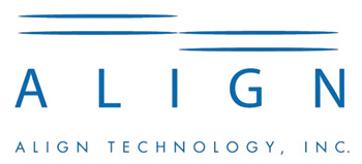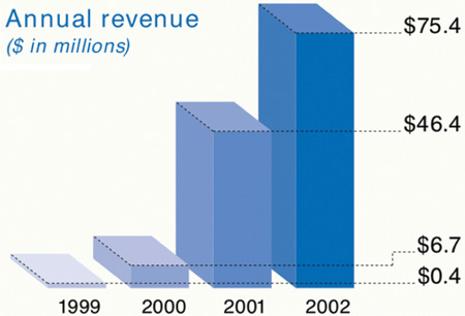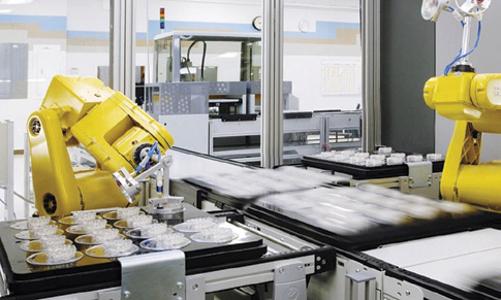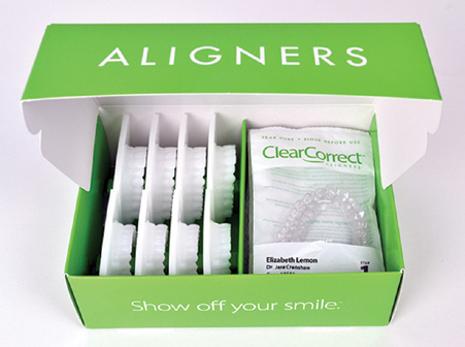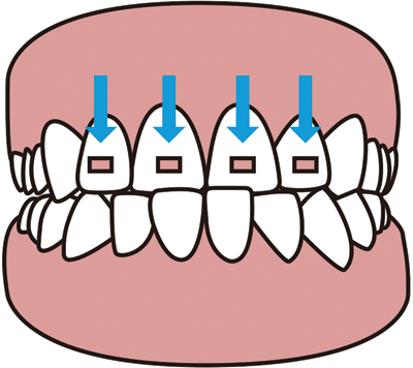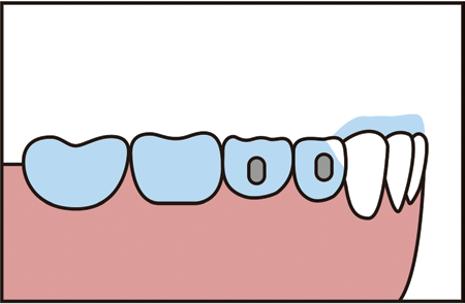Aligner Techniques in Orthodontics 1st Edition Susana
Palma Moya
Visit to download the full and correct content document: https://ebookmass.com/product/aligner-techniques-in-orthodontics-1st-edition-susana -palma-moya/
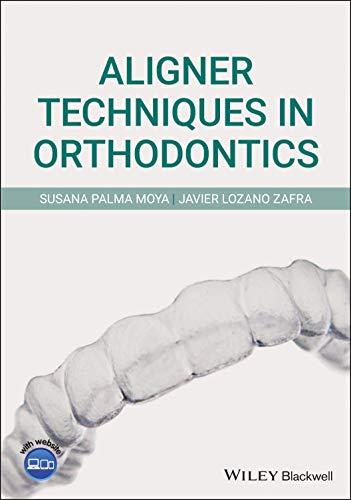
More products digital (pdf, epub, mobi) instant download maybe you interests ...
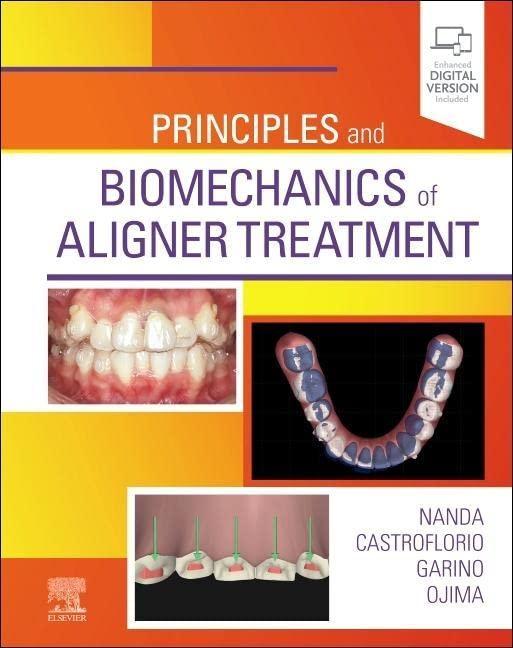
Principles and Biomechanics of Aligner Treatment 1st Edition Ravindra Nanda
https://ebookmass.com/product/principles-and-biomechanics-ofaligner-treatment-1st-edition-ravindra-nanda/

Temporary Anchorage Devices in Orthodontics (2nd Edition) Ravindra Nanda
https://ebookmass.com/product/temporary-anchorage-devices-inorthodontics-2nd-edition-ravindra-nanda/
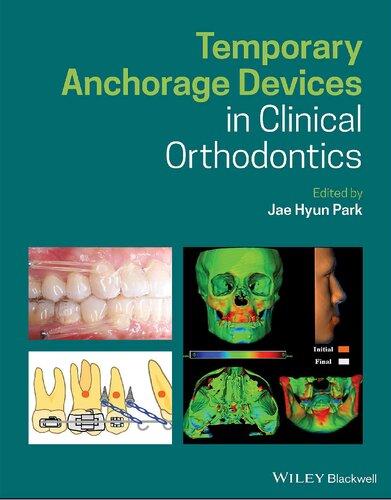
Temporary Anchorage Devices in Clinical Orthodontics Jae Hyun Park
https://ebookmass.com/product/temporary-anchorage-devices-inclinical-orthodontics-jae-hyun-park/

Orthodontics for the Craniofacial Surgery Patient 1st Edition Michael R. Markiewicz
https://ebookmass.com/product/orthodontics-for-the-craniofacialsurgery-patient-1st-edition-michael-r-markiewicz/
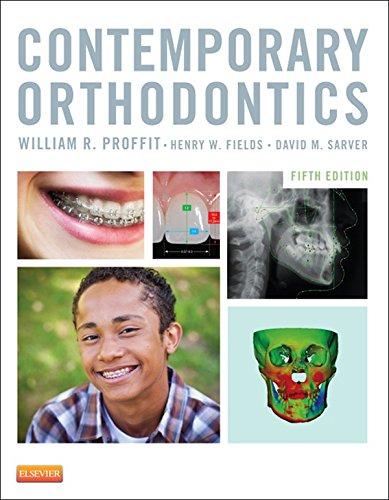
Contemporary Orthodontics E Book 5th Edition, (Ebook PDF)
https://ebookmass.com/product/contemporary-orthodontics-ebook-5th-edition-ebook-pdf/

Orthodontics for the Oral and Maxillofacial Surgery
Patient 1st Edition Michael R. Markiewicz
https://ebookmass.com/product/orthodontics-for-the-oral-andmaxillofacial-surgery-patient-1st-edition-michael-r-markiewicz/

TEXTBOOK OF ORTHODONTICS Sridhar Premkumar Bds Mds
https://ebookmass.com/product/textbook-of-orthodontics-sridharpremkumar-bds-mds/

Multidimensional Analytical Techniques in Environmental Research 1st Edition Regina Duarte (Editor)
https://ebookmass.com/product/multidimensional-analyticaltechniques-in-environmental-research-1st-edition-regina-duarteeditor/
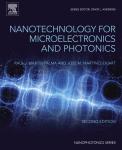
Nanotechnology for Microelectronics and Photonics. A volume in Nanophotonics 2nd Edition Edition José Martínez-Duart And Raúl Martín-Palma (Auth.)
https://ebookmass.com/product/nanotechnology-formicroelectronics-and-photonics-a-volume-in-nanophotonics-2ndedition-edition-jose-martinez-duart-and-raul-martin-palma-auth/
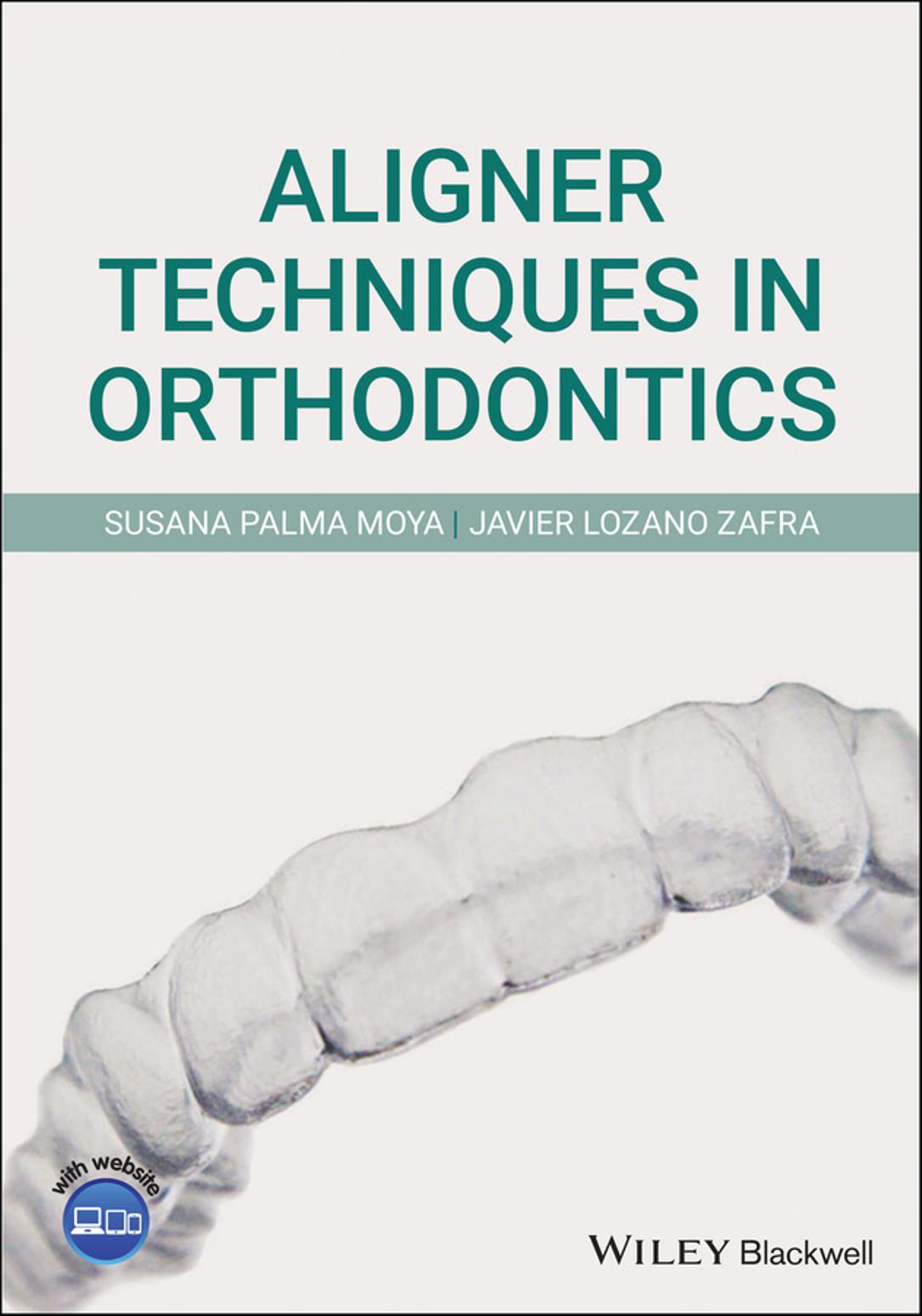
Aligner Techniques in Orthodontics
Aligner Techniques in Orthodontics
Javier Lozano Zafra
This edition first published 2021 © 2021 by John Wiley & Sons Ltd
All rights reserved. No part of this publication may be reproduced, stored in a retrieval system, or transmitted, in any form or by any means, electronic, mechanical, photocopying, recording or otherwise, except as permitted by law. Advice on how to obtain permission to reuse material from this title is available at http://www.wiley.com/go/permissions.
The right of Susana Palma Moya and Javier Lozano Zafra to be identified as the authors of this work has been asserted in accordance with law.
Registered Office(s)
John Wiley & Sons, Inc., 111 River Street, Hoboken, NJ 07030, USA
John Wiley & Sons Ltd, The Atrium, Southern Gate, Chichester, West Sussex, PO19 8SQ, UK
Editorial Office
9600 Garsington Road, Oxford, OX4 2DQ, UK
For details of our global editorial offices, customer services, and more information about Wiley products visit us at www.wiley.com.
Wiley also publishes its books in a variety of electronic formats and by print-on-demand. Some content that appears in standard print versions of this book may not be available in other formats.
Limit of Liability/Disclaimer of Warranty
The contents of this work are intended to further general scientific research, understanding, and discussion only and are not intended and should not be relied upon as recommending or promoting scientific method, diagnosis, or treatment by physicians for any particular patient. In view of ongoing research, equipment modifications, changes in governmental regulations, and the constant flow of information relating to the use of medicines, equipment, and devices, the reader is urged to review and evaluate the information provided in the package insert or instructions for each medicine, equipment, or device for, among other things, any changes in the instructions or indication of usage and for added warnings and precautions. While the publisher and authors have used their best efforts in preparing this work, they make no representations or warranties with respect to the accuracy or completeness of the contents of this work and specifically disclaim all warranties, including without limitation any implied warranties of merchantability or fitness for a particular purpose. No warranty may be created or extended by sales representatives, written sales materials or promotional statements for this work. The fact that an organization, website, or product is referred to in this work as a citation and/or potential source of further information does not mean that the publisher and authors endorse the information or services the organization, website, or product may provide or recommendations it may make. This work is sold with the understanding that the publisher is not engaged in rendering professional services. The advice and strategies contained herein may not be suitable for your situation. You should consult with a specialist where appropriate. Further, readers should be aware that websites listed in this work may have changed or disappeared between when this work was written and when it is read. Neither the publisher nor authors shall be liable for any loss of profit or any other commercial damages, including but not limited to special, incidental, consequential, or other damages.
Library of Congress Cataloging-in-Publication Data
Names: Lozano Zafra, Javier, author. | Palma Moya, Susana, author. Title: Aligner techniques in orthodontics / Javier Lozano Zafra, Dr Susana Palma Moya.
Description: Hoboken, NJ : Wiley-Blackwell, 2020.
Identifiers: LCCN 2020024180 (print) | LCCN 2020024181 (ebook) | ISBN 9781119607229 (paperback) | ISBN 9781119607212 (adobe pdf) | ISBN 9781119607236 (epub)
Subjects: MESH: Malocclusion–therapy | Orthodontics, Corrective–methods | Orthodontic Appliance Design–methods
Classification: LCC RK523 (print) | LCC RK523 (ebook) | NLM WU 440 | DDC 617.6/43–dc23
LC record available at https://lccn.loc.gov/2020024180
LC ebook record available at https://lccn.loc.gov/2020024181
Cover Design: Wiley
Cover Image: Courtesy of Javier Lozano Zafra
Set in 9.5/12.5pt STIXTwoText by SPi Global, Pondicherry, India
Contents
Preface xi
About the Authors xiii Acknowledgements xv
About the Companion Website xvii
1 History, Present and Future of Aligners 1
1.1 History of Clear Aligners 1
1.1.1 Early Beginning 1
1.2 Origins of Align Technology 7
1.3 Early Clear Aligner Manufacturers 8
1.4 Align Technology Development 9
1.5 Current Situation and Future of Aligners 11
1.6 Promising Aligner Initiatives 12
1.6.1 ClearCorrect by Straumann 12
1.6.2 SureSmile by Dentsply 13
1.6.3 F22 by Sweden and Martina 13
1.6.4 Clarity by 3M 14
1.6.5 Spark, by Ormco 15
1.6.6 CA Clear Aligner by Scheu 15
1.6.7 Irok 16
1.6.8 Angelalign 17
1.6.9 Alineadent 17
1.6.10 Remote Aligner Companies 18
1.7 Future of Clear Aligners 20
2 Basic Principles with Aligners 21
2.1 Forces 21
2.2 Engagement 21
2.3 Anchorage 22
2.4 Case Selection to Start with Aligners Technique 24
3 Why Invisalign? 25
3.1 Why Did We Begin Prescribing Invisalign in Our Practice? 25
3.2 Our Motivation 26
4
Patient Communication Skills 27
4.1 Invisalign Equates to Health, Wellness and Outstanding Results 27
4.2 Effective Patient Communication 28
5 Keys to Practice Growth 29
5.1 How to Get the Best Results with Invisalign 29
6 Patient Selection 31
7 Predictability of Movement 33
7.1 Treatments to Gain Familiarity with the Technique 33
8 Types of Treatments with Invisalign 35
9 Pillars of the Invisalign Technique 37
9.1 Aligners 37
9.2 ClinCheck Software 38
9.3 Attachments and Features of SmartForce 38
9.4 Auxiliary Techniques 38
9.5 Technician (CAD Designer) 38
10 Conventional Attachments 39
10.1 Features of SmartForce 41
10.1.1 Optimized Attachments 41
10.2 Optimized Support Attachments 47
10.2.1 SmartForces 47
11 Clinical Preferences 51
12 Attachments Bonding and Interproximal Reduction 53
12.1 Bonding Attachments Protocol 53
12.2 Interproximal Reduction Procedure 55
13 Digital Workflow 59
13.1 Records 59
13.1.1 Photographs 59
13.1.2 Impressions: PVS vs Scan 61
13.2 Creating a New Patient Record 63
14 ClinCheck Software 65
14.1 The Perfect ClinCheck Review in 10 Steps 65
14.1.1 Check Initial Occlusion 66
14.1.2 Review Comments Tab 67
14.1.3 Review the Final Position 67
14.1.4 Check the Number of Stages in Treatment 69
14.1.5 Dynamic Evaluation of the ClinCheck 70
14.1.6 Reviewing Occlusal Views 70
14.1.7 Check the Superimposition Tool 76
14.1.8 Review the Tooth Movement Assessment 76
14.1.9 Review Attachments 78
14.1.10 Review IPR 78
14.1.11 Review Precision Cuts 80
14.2 Communication with the Technician 82
15 Treatment Monitoring and Appointments Protocol 83
15.1 Tracking Treatment Progress 83
15.2 Appointments Protocol for Invisalign Patient 84
15.3 Protocol on Each Appointment 85
16 Troubleshooting and Retention 87
16.1 Auxiliary Techniques 87
16.1.1 Tooth Does Not Follow Rotation Movement 88
16.1.2 Tooth Does Not Follow Vertical Movement 89
16.1.3 Managing Root Tipping 90
16.1.4 Managing Posterior Mesialization 91
16.1.5 Reopening Space for Missing Molars 92
16.1.6 Achieving More than 4 mm of Anterior Intrusion 93
16.1.7 Managing Intrusion of the Mesiobuccal Cusp of the First Molar 94
16.1.8 Managing Premolar Rotation Greater than 45 Degrees 94
16.1.9 Solving a Posterior Open Bite 95
16.1.10 Correcting Canine Rotation as well as Anteroposterior Discrepancy 96
16.2 Finishing Techniques 96
16.2.1 Overcorrection 97
16.2.2 Overtreatment 97
16.3 Retention 98
17 Arch Length Discrepancies 99
17.1 Spacing 101
17.1.1 Spacing, Case 1 101
17.1.2 Spacing with Frenulectomy 105
17.2 Crowding 109
17.2.1 Crowding, Case 1 109
17.2.2 Crowding, Case 2 113
17.2.3 Crowding, Case 3 118
17.2.4 Crowding, Case 4 123
18 Growing Patients 129
18.1 First Treatment 132
18.1.1 Upper Maxillary Compression 132
18.1.2 First Severe Crowding Treatment 137
18.2 Teenage Patients 143
18.2.1 Class II Corrected with Lite Treatment 143
18.2.2 Class II Treated with Comprehensive Treatment 150
18.2.3 Class III with Impacted Canine 155
18.2.4 Traditional Technique for Impacted Canine Traction 160
18.2.5 Deep Bite Lite Treatment in a Teenager 161
18.2.6 Ectopic Palatal Canine 166
18.2.7 Temporary Tooth Management 172
19 Transversal Problems: Symmetric and Asymmetric Expansion 177
19.1 Things to Consider in Expansion Cases 180
19.2 Symmetric Expansion 182
19.2.1 Symmetric Compression Causing Anterior Open Bite 182
19.2.2 Symmetric Compression with Edge to Edge Bite 187
19.2.3 Symmetric Compression Combined with Skeletal Class III 191
19.2.4 Symmetric Compression with Loss of Attachment 196
19.2.5 Symmetric Compression with Bilateral Posterior Crossbite 200
19.2.6 Symmetric Compression with Class II and Gummy Smile 204
19.3 Asymmetric Expansion 210
19.3.1 Skeletal Class III Patient with Severe Periodontal Disease 210
19.3.2 Asymmetric Compression with Unilateral Posterior Crossbite from Canine to Second Molar 217
19.3.3 Asymmetric Compression with Unilateral Posterior Molar Crossbite: a Two-stage Approach 223
19.3.4 Skeletal Asymmetric Compression with Unilateral Posterior Molar Crossbite: Use of Maxillary Assisted Rapid Palatal Expander 228
19.4 Tips for Transversal Arch Compensation 235
20 Sagittal Discrepancies 237
20.1 Filling the Prescription form for Class II/III Patients 241
20.2 Class II Cases 245
20.2.1 Considerations for Class II Patients 245
20.2.2 Mandibular Advancement 250
20.2.3 Conventional Mandibular Advancement + Aligners 253
20.2.4 Invisalign Mandibular Advancement 258
20.2.5 Class II Corrected by Transverse Arch Development and Intermaxillary Elastics 266
20.2.6 Sequential Upper Distalization and Lower Mesialization 271
20.2.7 Sequential Distalization 276
20.2.8 Simultaneous Distalization 281
20.2.9 Simultaneous Distalization with TADs in Tuberosity 286
20.2.10 Simultaneous Distalization with TADs in Tuberosity 293
20.2.11 Top Jet 298
20.2.12 Class II with Proclined Lower Incisors 302
20.2.13 Full Class II with Posterior Crossbite 307
20.2.14 Class II Patient with Anterior Open Bite and Crossbite 311
20.3 Class III 316
20.3.1 Posterior IPR 317
20.3.2 Lower Sequential Distalization 318
20.3.3 Class III with Anterior Crossbite 320
20.3.4 Dentoalveolar Protrusion, Skeletal Class III 327 Contents
20.3.5 Anterior Crossbite, Skeletal Class III with Hypoplasic Upper Maxilla, Dentoalveolar Compensation 332
20.3.6 Anterior Crossbite, Skeletal Class III with Hypoplasic Upper Maxilla, Miniscrew-assisted Rapid Palatal Expander (MARPE) Combined with Aligners 337
20.3.7 Anterior Crossbite, Skeletal Class III 342
20.4 Dentoalveolar Protrusion Skeletal Class II 347
20.4.1 Upper and Lower Simultaneous Distalization Protocol 347
21 Vertical Problems 355
21.1 Open Bite 355
21.1.1 Open Bite: Transversal and Sagittal Cause 361
21.1.2 Open Bite: Transversal, Sagittal and Vertical Cause 366
21.1.3 Open Bite: Vertical Cause Treated with TADs 373
21.1.4 Open Bite with Tongue-thrusting Habit 378
21.1.5 Open Bite with Insufficient Incisor Display 383
21.1.6 Open Bite with 4 Day Aligner Change 387
21.2 Deep Bite: Classification According to Complexity 393
21.2.1 Deep Bite and Bruxism: Skeletal Class I with Crowding 399
21.2.2 Deep Bite, Class II: Skeletal Class II with Deep Bite and Lower Severe Crowding 403
21.2.3 Deep Bite: Skeletal Class I 408
21.2.4 Deep Bite: Skeletal Class II with TADs 412
21.2.5 Deep Bite with Lite Treatment 418 Bibliography 422
22 Asymmetries 423
22.1 Growing Patients with Asymmetry 423
22.1.1 Skeletal Class II with Asymmetry 423
22.1.2 Skeletal Class II with Asymmetry 428
22.2 Non-growing Patients with Asymmetry 432
22.2.1 Skeletal Class III with Maxillomandibular Asymmetry 432
22.2.2 Skeletal Class III with Mandibular Asymmetry 441
22.2.3 Midline Shift with Anterior Open Bite Tendency, Posterior Crossbite, Left Class II, Right Class III 448
23 Extraction Cases 453
23.1 Incisor Extraction 453
23.1.1 Class III with Lower Incisor Extraction 455
23.1.2 Class I with Lower Crowding and Periodontal Problem Lower Incisor Extraction 460
23.2 Extraction of Premolars 467
23.2.1 Absolute Anchorage 467
23.2.2 Maximum Anchorage 467
23.2.3 Class II with 14 and 24 Extraction 473
23.2.4 Extraction of 14 for Right Full Class II Patient, G6 Protocol 478
23.2.5 Extraction of 14 for Right Full Class II Patient, Modified G6 Protocol 481
23.2.6 Extraction of 14 for Right Full Class II Patient, Modified G6 Protocol and Powerarms for Root Straightening 487
23.2.7 Extraction of 14 and 24 on Bilateral Full Class II 492
23.2.8 Lower Space Closure for Class III Patient 498
24 Multidisciplinary Cases: Implants 503
24.1 TADs to Intrude Upper Molars 503
24.2 Upper Midline Shift 509
24.2.1 Opening Space for Implant of 23 509
24.3 Posterior Bite Collapse 515
24.4 Posterior Bite Collapse with Deep Bite 520
24.5 Biomechanics of the Locatelli for Mesialization of the Lower Dental Arch Opening Space for Implants 525
24.5.1 Locatelli to Open Space for Single Tooth Posterior Implant Side 527
24.6 Gingivectomy, Passive Eruption Case 532
24.7 Anterior Intrusion Anchored on Dental Implant 535
24.8 Anterior Torque Anchored on Dental Implant 538
25 Prerestorative Orthodontics: Veneers 543
25.1 Bleaching 549
25.2 Veneers to Solve Lateral Bolton Discrepancy in a Class III Patient 551
25.3 Space Opening for Anterior Crowns and Implants 557
25.4 Anterior Intrusion for Two Central Incisor Veneers 561
25.5 Edge-to-Edge Bite Preparation for Veneers 565
Index 569
I started to work with aligners in 2001 and immediatly I realized that they had a huge potential. It was easy for me to get familiar with the whole idea because I used to work with dental positioners at that time. In contrast, most of my colleagues were quite skeptical and did not consider aligners as a real orthodontic system.
Reviewing the literature we can see how the possibilities of the aligners have increased over the years. In 2001, there were limited tools available to solve mild crowded Class I malocclusions; however, several years after, we started to speak about extraction cases, Class II malocclusions, and open bites, which were treated more successfully each time. This situation was due to two factors: on the one hand, the continuous feedback the manufacturers use to make constant improvements, and on the other hand, the tremendous effort by many orthdontists who have been triyng to understand and explain what we call “the plastic biomechanics.” Therefore, the perception of using the aligners as an effective orthodontic method is improving due to the irrefutable fact that the results are getting better and better and, in many cases, they overtake the outcomes achieved by conventional orthodontics.
We are only beginning to understand how the aligners move teeth, and the learning curve is slower than we thought. Those are the reasons why their effectiveness is indisputably attached to academic training and experience. The professionals with greater knowledge and greater number of treated cases will achieve better results. This is no surprise as this is what happens when a new technique is introduced.
For all these reasons, as professionals, we are the ones who still establish our treatment goals. Aesthetics and the patient’s comfort should not conflict with the quality of the treatment results. This means that in quite a few situations, we need to use auxiliary techniques to complement the aligners deficiencies. It also means on the part of the practitioner a greater effort and dedication than usual to the occlusal and functional treatment finishing, and especially to training. I understand that leaving the comfort zone is not easy for those who have been treating patients the same way their whole life. This is where Dr. Palma and Dr. Lozano are absolutely exactly correct. This book fills a gap in our interpretation of the orthodontic movement with aligners. It offers a great number of essential keys to the understanding of the aligners biomechanics. It is the right publication at the right moment, with guides to treat different malocclusions with confidence, predictability, and quality. Following their solid biomechanics knowledge and experience‐based advice, the reader will be introduced to the treatment of more and more difficult cases, always keeping the traditional occlusal standards. Preface
The book covers all the different malocclusions from the easiest mild crowding cases to the complex pre‐prosthetic treatments. It is written like an atlas, with specific cases fully explained step by step. The reader will also find an innovative and attractive video format of each treatment. For all these reasons, this book is a wonderful and easy tool for references suitable for beginners, but also for orthodontists well trained in aligners. Moreover, for the skeptical ones, the book, at least, will peak their curiosity. Is it really possible to perform a good quality orthodontics with aligners? This book will provide answers, and without doubt, many arguments for discussion.
We are at the beginning of a new technique. Previous and complete case planification through a powerful software has radically changed the way we work. This means we have to go back to school, but we have never had so many possibilities to train ourselves like today. In this way, the professional is able to become as competent as he or she wishes. However, it seems that some things never change; and I do not just mean the huge reluctance to accept new concepts or techniques (that is really frequent in our profession), I also mean the small percentage of people such as Dr. Palma and Dr. Lozano, whose great desire for self‐improvement and progress gives as a result the finding of new knowledge. The knowledge that they generously share serves as an example and guide for many people.
Dr. Arturo Vela Hernandez
About the Authors
Dr Susana Palma Moya is an Orthodontist running a private practice in Ciudad Real, Spain. She obtained her postgraduate degree in Orthodontics and PhD in Dentofacial Orthopaedic and Orthodontics from the University of Madrid in 2002.
● Was among the first group of Spanish Invisalign Providers in 2001.
● International Invisalign Speaker since 2015.
● Assistant professor for the postgraduate’s program in orthodontics at U.C.M University in Madrid from 2003 to 2007, and currently teaching orthodontics at Salamanca University.
● University degree in Orthodontics with Surfery from the International University of Cataluña UIC 2007
● University degree in lingual Orthodontics by Valencia University 2009- 2011
● Invisalign peer award 2015 (first international Award) and Invisalign peer award 2017(second European Award).
● Member of the EMEA teen global group and member of Ortodoncis group in Spain
● Invisalign Diamond II practitioner since 2015 and lectured in Invisalign treatment throughout Spain and Europe.
Dr Javier Lozano Zafra is an Orthodontist running a private practice in Murcia, Spain. Degree in Dentistry, Murcia University
● PhD, Murcia University
● Postgraduate programme in Orthodontics, San Pablo CEU University
● Honorary lecturer, Seville University, Spain
● Invisalign International Speaker
● Invisalign Diamond Practitioner
● Honorary Member of the French Society of Aligners
● Member of the Invisalign TEEN global group and member of Ortodoncis group in Spain
Acknowledgements
My thanks must go first to my husband Paco who has worked just as much as I on the preparation of this book. He has worked tirelessly in gathering together the evidence from videos and other photographic material required. I also want to thank him for his love and understanding which have given me the inspiration and strength to write it.
To my children Marta and Paco for the time I have stolen from them and the continuous inspiration and strength they provide to enable me to get the best from myself: thank you.
To my parents, Mercedes and Paco, whose love and effort encouraged me to become an orthodontist and who have been pillars of strength throughout my life.
To Align Technology for believing in me and giving me the opportunity to share my orthodontic experience with other practitioners from 2015 onwards.
I also want to thank all my orthodontics team, because without them we could not get the results we see today, which we are able to demonstrate in the book.
I want to thank my good friend and partner, Dr Javier Lozano, not only because it has been a pleasure sharing our time working on making the book (and ultimately helping many students master the aligner technique in Aligners Academy), but also because his friendship has led to a tipping point in my life.
And finally, my thanks go to the entire Wiley team for their help in producing this book.
Dr. Susana Palma Moya
To Susana and Paco, You both take me to the ‘next level’ every day, inspire my work and my life. I do not know where I will be in 10 or 20 years’ time but, of this I am sure, our friendship will remain one of the most important pillars of life to me.
Thanks for trusting me, for taking care of me, for having me as a friend: I hope life brings you as much happiness as I think you deserve.
To Dani,
Your smile is the most important thing to me.
Dr. Javier Lozano Zafra

